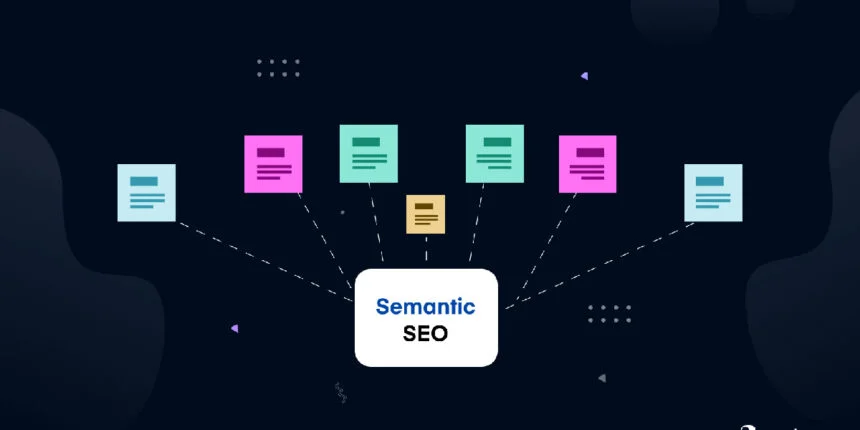Introduction to Ben Stace Semantic SEO Case Studies
In the ever-evolving world of digital marketing, staying ahead of the curve is paramount. Enter semantic SEO—a powerful approach that goes beyond traditional keyword strategies to truly understand user intent and content context. Among those leading this charge is Ben Stace Semantic SEO Case Studies, a name synonymous with innovative SEO techniques. Through his expertise, numerous businesses have experienced remarkable transformations in their search engine rankings.
This blog post will delve into some captivating case studies showcasing how Ben Stace’s semantic SEO methods have generated impressive results for various clients. From local businesses climbing to the top of Google searches to e-commerce sites capitalizing on rich snippets, these examples illustrate why embracing semantics can redefine your online presence. Join us as we explore these success stories and uncover actionable insights that could elevate your own SEO strategy!
Importance of Semantic SEO in Modern Search Algorithms
Semantic SEO has emerged as a game-changer in the landscape of digital marketing. It focuses on understanding user intent rather than solely relying on keywords. This shift is crucial, given how search algorithms have evolved.
Modern search engines like Google prioritize context over exact matches. They analyze relationships between words and concepts, allowing for more relevant results tailored to users’ needs.
Using Semantic SEO enhances content visibility significantly. Optimizing for semantics means crafting richer, more informative material that resonates with audiences.
Additionally, it fosters better engagement rates. When users find what they are genuinely looking for, they’re more likely to stay longer and interact with your content.
This approach also caters to voice search trends as users increasingly phrase queries naturally. Adapting your strategy helps capture this growing segment effectively while staying ahead of competitors in the ever-changing online arena.
Case Study 1: How Ben Stace Helped a Local Business Rank #1 on Google with Semantic SEO Techniques
A small bakery in a competitive urban market faced challenges with visibility. Despite their delicious offerings, they struggled to appear on the first page of search results. This is where Ben Stace stepped in.
Utilizing semantic SEO techniques, he focused on understanding user intent and context around relevant keywords. Rather than just targeting generic terms like “bakery,” he optimized for phrases that captured the local vibe, such as “artisan bread near me” or “best cupcakes in [city name].”
Ben also implemented structured data markup to enhance how search engines interpreted their content. This allowed rich snippets to show up alongside search results, grabbing users’ attention effectively.
Within months, the bakery climbed from obscurity to claim the coveted #1 spot on Google for several targeted searches. The increase in foot traffic was remarkable; customers were eager to try what they had seen online.
Case Study 2: The Impact of Semantic Markup on E-commerce Websites
Semantic markup plays a pivotal role in enhancing e-commerce websites. By using structured data, online retailers can provide search engines with detailed information about their products.
One case study highlights how an e-commerce brand implemented schema.org markup. This resulted in rich snippets appearing in search results. The visual enhancements attracted more clicks and significantly boosted organic traffic.
Another aspect of semantic markup is its ability to improve user experience. When product details are well-defined, customers find it easier to navigate sites and make informed decisions.
In this particular example, the site saw an increase in conversion rates as visitors engaged more deeply with the content presented through enriched metadata.
Additionally, integrating local business schema helped connect the brand with nearby customers searching for specific items available locally. This dual approach not only enhanced visibility but also strengthened community ties within their market segment.
Case Study 3: Leveraging User Intent for Higher Search Engine Visibility
Understanding user intent is crucial for successful SEO. Ben Stace’s approach focuses on aligning content with what users are genuinely searching for.
In one case, a client noticed stagnant traffic despite optimized keywords. Through extensive research, Ben identified the nuances of user queries that went beyond simple keywords. He discovered that users were looking for specific solutions rather than general information.
By refining the content to address these needs directly, he significantly improved search visibility. The updated pages included detailed FAQs and how-to guides tailored to common customer questions.
This strategy not only boosted rankings but also enhanced user engagement metrics, such as time on page and lower bounce rates. Visitors found exactly what they sought, leading to increased conversions—a win-win scenario in digital marketing!
Implementing Semantic SEO Strategies: Tips and Best Practices
To effectively implement semantic SEO strategies, start by focusing on keyword research. Look beyond traditional keywords and explore related terms. Tools like Google’s Keyword Planner can reveal valuable insights.
Next, optimize your content structure. Use headings and subheadings strategically to create a clear hierarchy. This not only improves readability but also helps search engines understand the context of your content.
Incorporate schema markup where applicable. This structured data enhances visibility in SERPs, making it easier for users to find relevant information quickly.
Don’t forget about user intent. Craft content that answers specific questions or needs within your niche. Engaging visuals and multimedia elements can further enrich the experience.
Keep monitoring performance through analytics tools. Adjusting your strategy based on real-time data ensures you stay ahead in the evolving landscape of semantic SEO.
Conclusion and Future Outlook for Semantic SEO
The world of SEO is ever-evolving, and semantic SEO has emerged as a game-changer. Ben Stace’s case studies illustrate the tangible benefits of adopting these techniques. The success stories demonstrate that businesses can achieve remarkable results when they focus on user intent and content relevance.
As search engines grow smarter, understanding context becomes crucial. Websites that leverage semantic markup not only gain visibility but also provide users with a better experience. This approach aligns perfectly with modern algorithms that prioritize relevant content over mere keyword density.
Looking ahead, it’s clear that semantic SEO will continue to shape how websites rank in search engine results. Companies willing to adopt these strategies will likely see improved engagement and higher conversions. As we move forward, staying updated on advancements in this field will be key for those aiming to maintain their competitive edge online.
Ben Stace’s insights serve as an invaluable resource for navigating this landscape effectively. Adapting to these changes now will pay off significantly in the future. The journey into semantic SEO is just beginning, but it’s already proving essential for businesses looking to thrive in digital marketing.

















